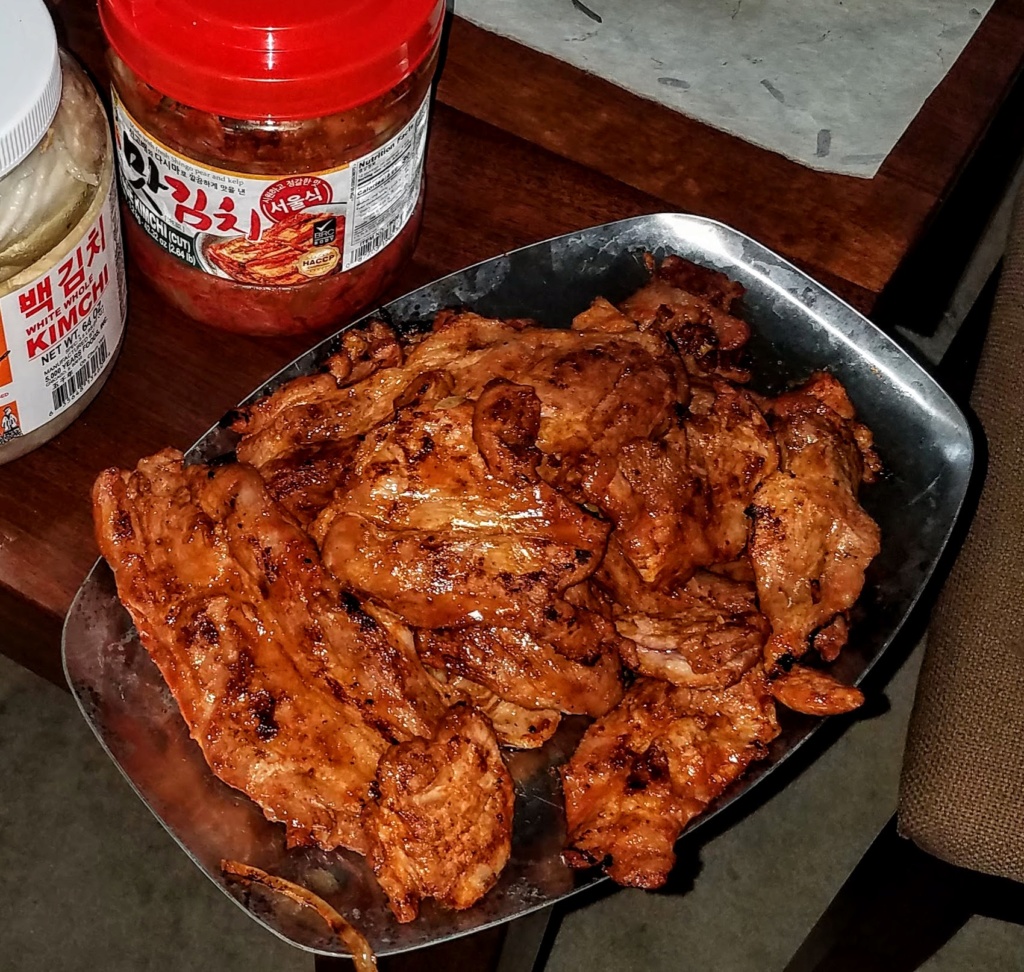UNCLE JIMMY wrote:Tina had a request, and final decision, of Lasagna for dinner tonight. The only thing I have to request, is that she does not use those Non-Boil Lasagna noodles. Other than that, Lasagna sounds great to me.
Mmm, I've been wanting homemade lasagna for a while now. Am REALLY considering it since I discovered both of us liked the Rao's Marinara as that would make it a lot easier for me to tackle. Brian really liked the lasagna I made for him once with Italian sausage instead of ground beef -- that version was my Dad's favorite that I made as well. I've got a big container of ricotta in the fridge but it might not be good anymore as it's been in there a while.
But I DO have a "make your own cheese kit" that I ordered a while back for a "kitchen warming" present for my BIL but then decided to give him something else (got him those synthetic splatter guard "cones" for both 10-inch and 12-inch skillets to keep his new stove clean)! The kit will make either mozzarella or ricotta and the directions aren't too complicated. I do know how much better fresh ricotta is in ANYTHING than the type you buy at the grocery.
I've used those "no boil" noodles before but they were made from imported Italian pasta and were REALLY thin -- I forgot the brand name but it came in a square aluminum pan about 8x8 inches and the noodles were that size and if you wanted to, you could make the lasagna right in that plan. We didn't notice much of a difference other than how thin the noodles in the lasagna were.
It's been a long time since I made lasagna but read about this way to cook the noodles which I plan on trying the next time. Mainly because it's such a trial to cook them in a large pot of water and then drain them trying to keep them from either breaking apart or STICKING together:
Soaking Lasagna NoodlesChoose a 9-by-13-inch baking dish or a similarly large and heatproof pan. Place a layer of lasagna noodles in the dish, and angle one noodle across the bottom layer at a diagonal. This extra noodle helps keep the layers of noodles from sticking together. Repeat that process for each additional layer, until you've used all your noodles. Pour boiling water over the noodles, and let them soak for 20 to 30 minutes. If your tap water is very hot, 160 to 180 degrees Fahrenheit, you can use water from your faucet instead of boiling water.
Baking the Lasagna (using noodles made like those above)
Drain the noodles when your sauce and other ingredients are ready, and assemble the lasagna dish in the normal manner. If your sauce is relatively loose and liquid, you probably don't need to make any adjustments. If your lasagna recipe uses a relatively thick and pasty sauce, you'll probably need to add a bit of liquid to finish cooking the noodles. Add approximately 1/3 cup of water or -- better yet -- tomato juice to your 9-by-13-inch pan, increasing or reducing that amount for other batch sizes. Bake the lasagna as your recipe directs, then let it rest for 15 to 20 minutes before serving.
Now I'm hungry...

 Home
Home
 Those no boil noodles taste like raw flour to me.
Those no boil noodles taste like raw flour to me.



 Oh No! .... Peace be with them!
Oh No! .... Peace be with them!